What is an Ideal Cut?
Most people, when looking for an ideal cut, don't think twice about what a vendor or an independent lab grade says. "GIA Triple Excellent" is what some people think to be ideal, moreover, there is no universally accepted proportion set that is accepted as "Ideal".
History of The Ideal Cut
In 1919, a Belgian born engineer by the name of Marcel Tolkowsky published the book Diamond Design. In that book, were a set of ideal proportions for round brilliant diamonds meant to maximise the beauty of the diamond.
Over the years, the Tolkowsky proportions were ever so slightly modified, but still called ideal. Since they all had very similar proportions to Tolkowsky, he was referred to as the father of the modern round brilliant cut.
The Past Twenty Years
The past 20 years has seen rapid and significant change in grading the cut of diamonds. Whilst most jewellers and independent labs such as the GIA are still grading cut based on proportion - a system used for the last century, labs such as the AGS and retailers like us, amongst others, are objectifying a diamond's beauty and measuring light performance.
What is Light Performance?
Light performance objectively measures a diamond's beauty, based on 3 dimensions and every facet of the diamond. Because light performance is not based on proportions, cut grades based on light performance are no longer limited to round brilliant cuts, as they are with many lab reports.
There are two main aspects to light performance:
- Light Return: Measures how much light is being returned by a diamond.
- Optical Symmetry: Measures how even and symmetrical the light return, especially the contrasting areas are within a diamond.
The Technologies
Reflector Technologies - Popularised online by Melbourne gemmologist Garry Holloway and based on the FireScope, the Ideal-Scope allows light being returned through a diamond to be passed through a red filter. The result is red being shown as light return and white as light leakage.
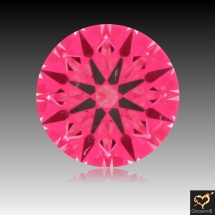
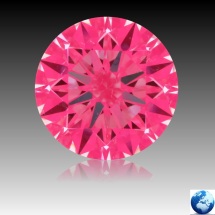
As you can see, even though both these diamonds have been graded by the GIA with excellent cut, polish and symmetry the diamond on the left has maximum light return and perfect optical symmetry, yet the diamond on the right has leakage in the centre and has poor arrow formation.
Considered by some a newer version of the Ideal-Scope, the AGS ASET, builds on the principal of the Ideal-Scope. The ASET goes one step further and breaks light up by its intensity. The red on an ASET image is the most intense light, the green the less intense light and the blue is the contrast.
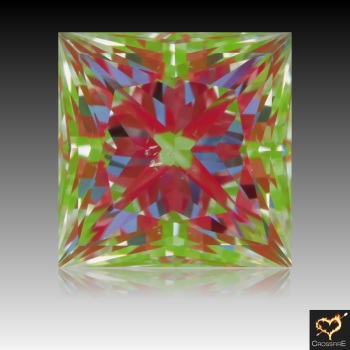
We use the AGS ASET for all non-round cut diamonds because it displays differing intensities of light return.
Raytracing - Raytracing requires a proportion scanner like those made by OGI, Sarine or Octonus. Whilst many raytracing programs are available, such as the OGI Firetrace system, we have found the best, most detailed and most researched system to be the AGS Performance Grading Software.
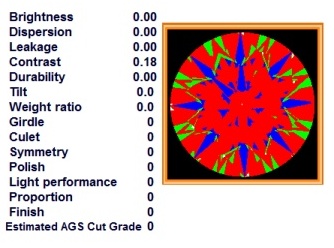
Licensed from The American Gem Society (AGS), this system allows us to give any round brilliant, princess or emerald cut diamond a cut grade based on the AGS system. With 11 different factors, that affect the grade, one can pinpoint any problem areas, such as an overly painted girdle, or lack of fire.
Other Technologies - There are other technologies available to measure a diamond's light performance, however, in our opinion, they have limited commercial viability in Australia. For example, the Isee2 beauty analyser requires the purchase of a certain amount of diamonds from the manufacturer of the machine, and hence can not be bought outright like other machines.
Hearts & Arrows
Hearts and Arrows is an optical phenomenon, whereby when viewed through a special viewer, eight arrows are seen from the top of the diamond and eight hearts are seen from the bottom.

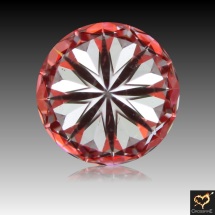
All our Crossfire diamonds display hearts & arrows. Furthermore, images of the hearts pattern can be viewed online to verify that they are authentic hearts & arrows diamonds.
Buying An Ideal Cut
When buying an ideal cut diamond, it is imperative that you get proper analysis using modern technology. All our Crossfire and Signature Series diamonds have downloadable analysis, and a lot of our International Selection diamonds have at least one image available. Once in our lab, our international selection diamonds are analysed the exact same way our Crossfire and Signature Series diamonds are.
Why Isn't Anyone Else Using These Tools?
It's true - very few jewellers and diamond merchants use such tools to analyse their diamonds and provide an extra service to their clients. Whilst there are a few in the United States, we are currently the only jeweller to provide such detailed analysis of our diamonds online. There are a few reasons why:
- Just like a good master jeweller, both tools and skills are needed to analyse diamonds to the extent we do. The equipment costs at least $30,000, and it takes not only a good understanding of technology, but also a lot of learning to master the techniques needed to perform the analysis.
- The diamonds are simply not good enough, and analysis like ours will expose the true quality of the diamond.
- Jewellers are stuck selling the same way they did 10, 20 or 30 years ago. Whilst the vast majority of diamond buyers accept this, our clients are more discerning and thus our analysis is essential.